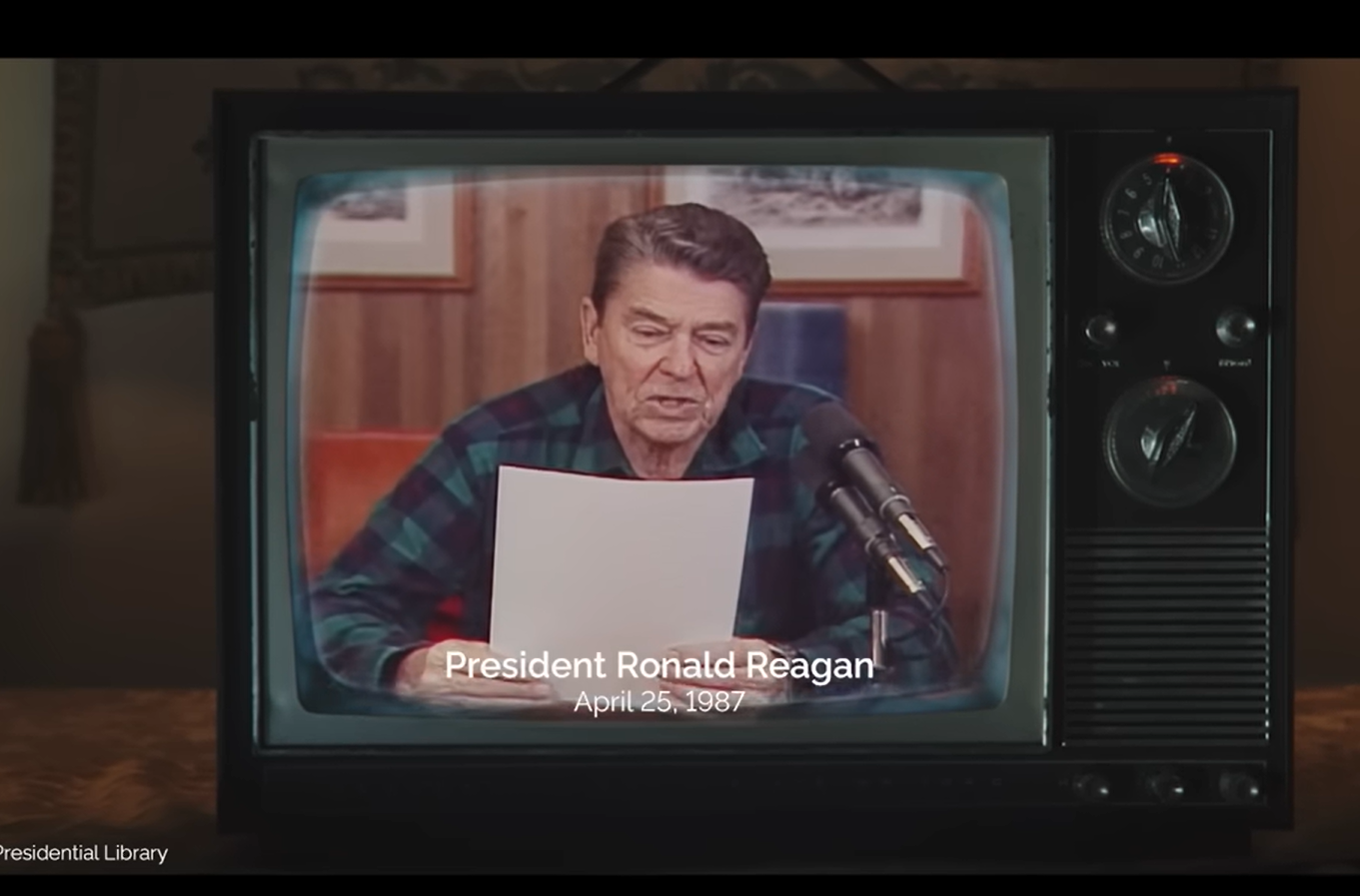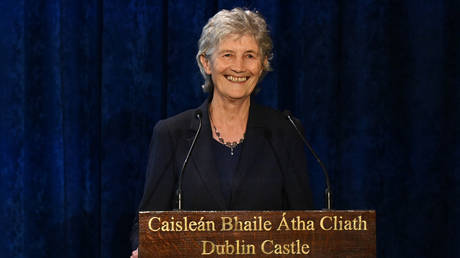
In the global portfolio of political ads that changed history, a handful stand out.
In the U.K., the famed “Labour Isn’t Working” poster of 1978 has long been credited for helping Margaret Thatcher’s Conservative government sweep to power the following year. Before that, the “Daisy” political ad, created for U.S. President Lyndon B. Johnson’s campaign against Barry Goldwater, was pulled from the air for fear-mongering in 1964 — but also deemed tremendously effective.
And late Thursday night, a 60-second spot from Ontario, based on excerpts from a 1987 radio address by former U.S. president Ronald Reagan, caused President Donald Trump to end all trade talks between the two nations. The move threatens to further damage a bilateral trading relationship worth approximately $900 billion annually.
Ontario Premier Doug Ford announced Friday afternoon the province would stop running the ads — but only after they aired during the two opening World Series baseball games this weekend. The move seemed to do little to placate Trump, who told reporters later Friday he was satisfied with the current trade arrangement with Canada and had no plans to meet Prime Minister Mark Carney during summits in Asia over the next week.
While it’s too early to gauge the lasting effect of the campaign, its immediate impact was dramatic. Online views of the ad spiked, even as efforts to suppress it grew, a phenomenon sometimes referred to as the “Streisand Effect.”
As of 7:30 a.m. Friday in Toronto, the original social-media post from Ford containing the ad had been viewed 578,000 times over eight days. Five hours later that figure was a million. By Saturday morning, it had reached 1.5 million.
“The funny irony here is that in the wake of Trump’s post, now the whole world knows what Reagan said about tariffs as opposed to this just being targeted ads by the Ontario government,” said Bank of Nova Scotia economist Derek Holt.
When the province announced the $75 million ad spend, it said it would air on stations including Fox, NBC, CBS, ABC, ESPN, Newsmax and Bloomberg Television.
Seventy-five million dollars is a “a pretty sizable number,” especially for a Canadian advertising budget, said Brian Wieser, a former advertising executive who now works as a Wall Street analyst covering advertising companies. “There’s more money spent on political advertising alone in the United States than spent on all advertising in Canada.”
But what matters most is having a clear media strategy, including knowing who your target audience is, he said. “What was the goal? The goal is to reverse American policy, I guess,” he said. “Were they intending to needle Trump? I don’t know if that was actually part of the brief.”
Ford has said the ad was meant to target Republican-held districts in the U.S., and that he hoped the “Reagan Republicans” would win against “the MAGA group” in the debate over protectionist trade policies.
The 60-second spot, unveiled by Ford on Oct. 16, is a lesson in simplicity. It opens with the instantly recognizable voice of Reagan, also a famous Hollywood actor, over shots of bucolic American farmland, but then takes a darker tone as he outlines all of the reasons he says protectionism is dangerous.
The images shift to boarded-up businesses, grocery bills being scrutinized, and American families forced to move out of their homes. In a nostalgic tug, Reagan delivers his last sentence on an old-fashioned television screen. “America’s jobs and growth are at stake,” he warns, dressed in an everyman plaid shirt, sitting in a cozy paneled room at Camp David, Maryland.
The ad ends with the words “Ontario Canada” superimposed over a shot of the Ambassador Bridge connecting Windsor, Ontario and Detroit, Michigan.
The Ronald Reagan Presidential Foundation & Institute said the advertisement used selective audio and video clips, and Trump complained it was “fake.” While the Ontario ad left out the context that Reagan was explaining his decision to add tariffs to some Japanese goods, he described it as a “special case,” and overall extolled the benefits of free trade.
In the coming days and weeks, the validity of the maxim “there is no such thing as bad publicity” is set to be tested, as Canada waits to see if the U.S. will resume trade talks. The two nations had been progressing in negotiations on lowering steel and aluminum tariffs, potentially in exchange for greater U.S. access to Canadian energy.
“Judging the effectiveness of an advertising campaign is an art form,” said Wieser. “It is the story of the hour. It remains to be seen how much durability this story has.”
— With assistance from Mark Bergen.





